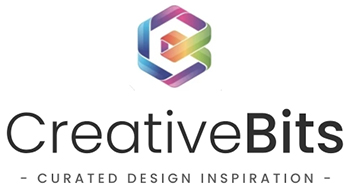The most enticing benefit of having a remote working graphic design team is that you can hire people from all over the world. You are not confined to just hiring those local to your business. This not only drastically increases the number of potential candidates but also allows you to choose the best in the field that fits your business needs.
However, like with most things, having a remote team of graphic designers does not come without its own challenges.
There are three main challenges that you will be faced with when managing a remote team of designers and we will go over each of these in further detail.
- Managing Creatives
Creative individuals take their work personally and it is important to know how to manage this.
- Managing a Team Remotely
Management without the option for in-person face to face discussions.
- Maintaining a Close Knitted Team Environment.
Despite location difference, it is important to bring the team together and help one another
STEP 1 – Managing Creatives
The most important thing to understand when dealing with a team remotely is the need for good communication. You need to have a clear vision of what you want, and how you plan to get there. Otherwise, they will have a hard time meeting your expectations.
Ascertain your Requirements
Your team of graphic designers are experts in their field. They have a wealth of knowledge and understanding but without clear instructions, it cannot be put to good use.
You most probably have an end-goal in mind and how it should look but without a clear understanding of how to get there then how would you expect your remote working team to know what to do.
Therefore, the first thing to do before making any suggestions to your design team is to methodically set out your project expectations and ask yourself a series of questions.
- What do you want to get out of this project?
- What is the purpose of this project?
- What should the design be able to accomplish?
Less Talking, More Showing
Every single team member on your design team is inherently different but there is one thing they all share. The frustration they face when presented with a client who has no real idea of what they want their proposal to look like. Vague and wishy-washy ideas but no concrete vision.
The best way to overcome this is to show your team similar works that you like and would like the work based on. It is important not to copy but to take inspiration from. We learn from seeing and showing a picture or a sketch of what you would like over just some verbal is a lot easier for the designer to understand. After all, designers are creative individuals.
Recognise Expertise
Your team members are talented individuals who are experts in their field. They are design experts and have the skill set to be able to take your concept and transform it into a finished project.
The main thing to understand here though is that there is always going to be some interpretation. The designer will understand the brief and the end goal but will take a slightly different take on it than you may have done. It is important to not let the designer change everything you wanted but do allow some flexibility as their opinions are valuable and they probably have a good reason for doing it that way.
Constructive Feedback
When one of your designers sends an unfinished draft to you, take your time, and think about giving constructive and productive feedback that addresses your concerns but does not offend your staff.
You will notice that each member of staff operates slightly differently, and some may take critique better than others. It is imperative to lean on their knowledge and show them what you would like changed and allow them the time to make the changes without too much direction.
It is important not to give too confined corrections that drastically change the design as you are more than likely going to end up with a design that you like even less.
STEP 2 – Managing a Team Remotely
Good Communication
Strong communication from management to any team is invaluable for any project and it is no different when it comes to managing a team of remote designers. The added challenge of remote working means that good communication is even more key in ensuring that projects run smoothly and to set briefs.
Appropriate Equipment
Individuals who work remotely rely heavily on the use of technology to get things done and they require all the right tools to get the work done to the correct standard. If you have team members who do not have the appropriate equipment it is something that will likely come back to haunt you later.
The best way to determine this is to assign a list of remote working tools that each member of the team requires to perform their job remotely. It is important when making this list that you consult with the whole team and ask for their input. After all, it is them that will be using these tools to produce the content.
Furthermore, now is not the time to introduce new tools and software as this will just mean strong learning curves for your team members at a time when they are looking to adapt to working remotely. The last thing you want to happen is for some of your team to be using one design program whilst the others use another. You should aim for everyone to be using the same software so that they can all follow the same procedures.
The entire team will benefit hugely if there is a unified approach for all team members. Whether we are talking about individual files or communication messages; each member should know exactly which tool to be using.
Designate a Meeting Schedule
One of the downsides of remote working is that your remote works do not get the benefit of in-person face to face discussions. Whether it is during their lunch break, walking along the corridor, or bumping into one another in the office. Without this spontaneous interaction, there is a real emphasis on the need to ensure there is as much regular interaction between your team as possible. Be sure to thoroughly engage with each team member and monitor the amount of interconnectivity between individuals within your team.
The best way to ensure this happens organically and without too much pressure is to promote discussion between team members regardless of the origins of the topic. Allow for personal interactions to happen as these will in most cases naturally translate to discussion regarding work. It is a good idea to have this checked on a weekly check-in with your team.
With the correct balance of communication, a team of remote graphic designers will still operate efficiently. This is because it is not about how often you see your team but more about the effort you put into building connections with them and this can be done anywhere.
Tackling Creative Blocks
One of the biggest challenges with working in a creative industry such as graphic design is the emphasis on having to rely in part on creativity to get the work done. What happens when the designer has hit a creative block? You have probably heard of writer’s block, but designers get it too.
The best thing to do in this situation is to sit back and encourage them to take the time they need to take a break and allow for their creative mind to reset. Being sat in front of a computer for long periods can be draining and sometimes the best solution is to just get up from your computer and do something away from the screens.
The hardest thing to understand here is that you cannot force creativity. No matter how hard you try. Your team will need that right balance of work time and downtime or otherwise, you will not see the results you desire. You can encourage them on how to tackle creative blocks but not how to avoid them completely.
STEP 3 – Maintaining a Team Environment
The third and final core way to help manage your remote team is understanding teamwork. It is a vital part of the puzzle whether you have a team who is working remotely or not.
When you think of a team you imagine them working together in the same office space but with remote working that simply is not the case. The virtual team situation presents a unique challenge.
A team of designers working together remotely requires encouragement to ensure they continue to thrive.
Managing your Team and their Careers
Your team is a single unit, but that unit is comprised of a collection of individuals. Each one of these individuals carries their own needs and requirements and it is important to not lose track of this.
Most people enjoy being part of a team if it is working effectively. It allows us to feel connected to one another and gives us increased opportunities to carry out excellent work. Be sure to get to know every single one of your team members in detail. The last thing you want is for anyone to slip through the net and for them to feel left out. Take time to speak to them and consistently and regularly check in on them to ask about their progress and see how satisfied they are with the work they are being asked to do.
It is important to check-in and monitors your staff so that you can ascertain if there are any underlying problems. It is better to deal with them now before they develop into something much larger.
Appropriate Leadership
Teams vary in size and depending on how large or small your team is will depend on the level of assistance you will need with leading the team. The best way to determine this is to ask yourself a few questions.
- If I were to manage the team myself, would I be able to keep up?
- Do I require help in managing the team?
- Do the team members respond positively to my leadership?
A sign of strong leadership is knowing when you need to ask for help. Appropriate leadership is knowing when to appoint some in your team as your go-to for certain aspects of the job. The main benefit of delegating certain roles is that this then frees up time for you to focus on other responsibilities.
Assigning Projects to the Correct Person
Not everyone in your team will have the same set of skills and nor will they all have the same expertise in certain areas compared to others. This is not a bad thing as it means you can draw in on different members of staff to tackle varying challenges and tasks.
You may have a designer who specialises in infographics whilst another is an expert in advertisement and animation. Even two team members who share similar career histories are likely to have different skillsets and most definitely different strengths and weaknesses.
The best way to manage your graphic design team is to first understand who the best fit for which type of work is. Assign your staff members to roles that they can fulfil. There is no point assigning someone who specialises in animation to an infographic project when you have a team member who specialises in infographics.
Not only does that seem counterproductive it is also unlikely to keep your team interested. Keeping your team interested is a key part of creativity. Those that are more engaged with their work tend to perform better than those who are not.
*
Despite the challenges you may face with your remote working team, providing you take the time to follow the tips we have set out there you can begin working towards a successful future


Comments are closed.